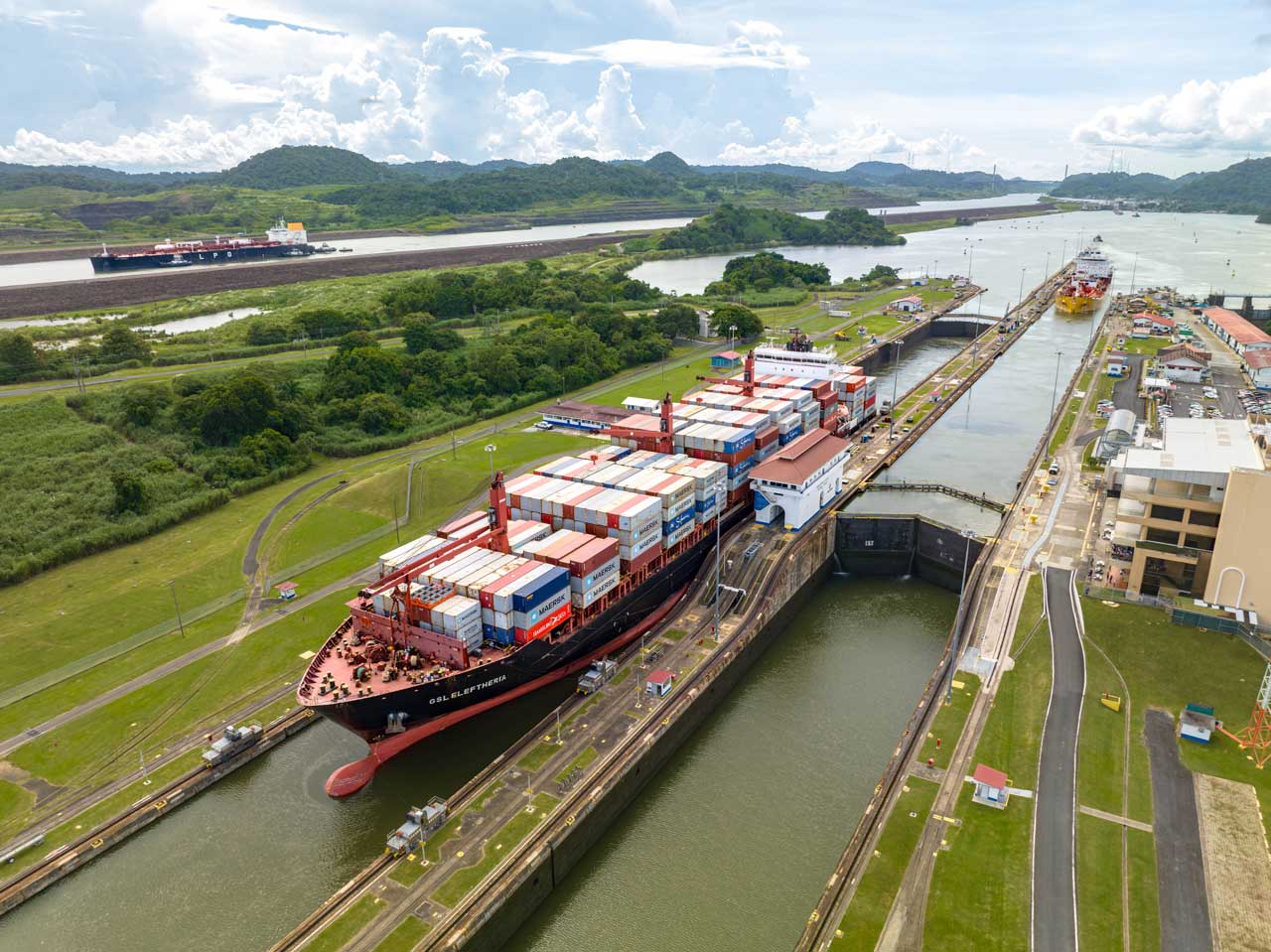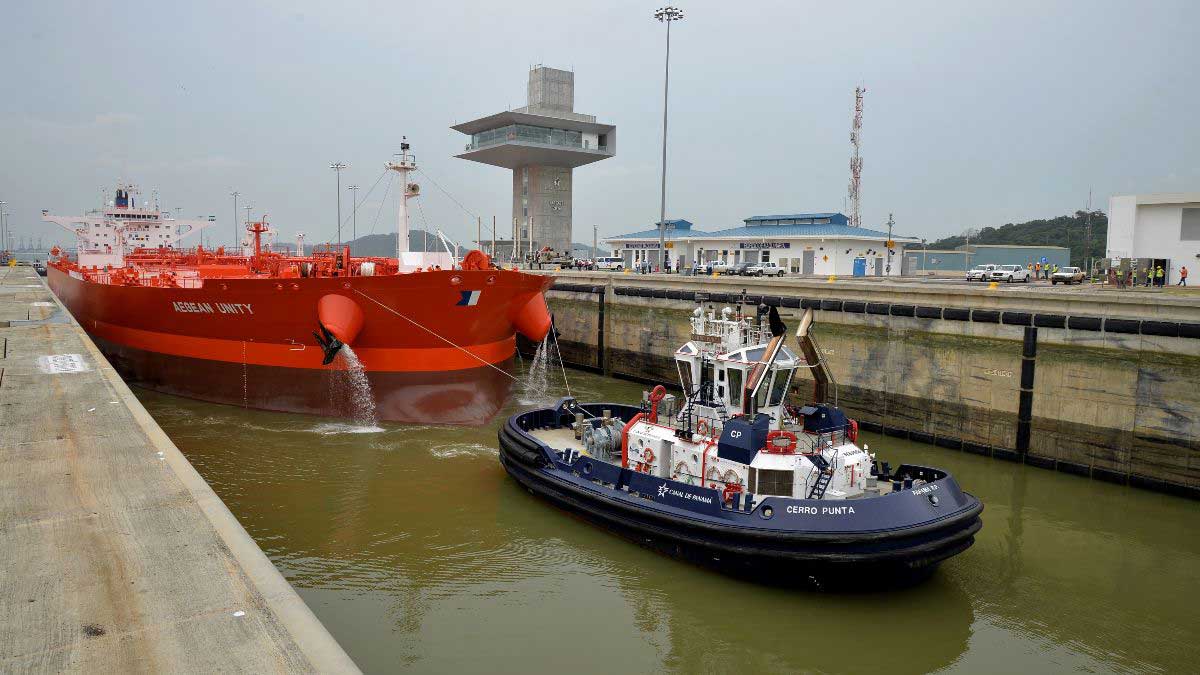Panama City, Panama, July 30, 2018 – Yesterday, the Panama Canal registered the transit of its 4,000th Neopanamax vessel through the Expanded Canal, underscoring the steady growth of the burgeoning LNG segment – which began transiting the waterway for the first time following the inauguration of the Expanded Canal.
The liquefied natural gas (LNG) tanker Maria Energy completed the milestone transit traveling southbound from the Atlantic to the Pacific Ocean on July 29.
“The steady increase in Neopanamax transits reflect our customers’ confidence in the Expanded Canal, particularly with our fastest-growing segment,” said Panama Canal Administrator, Jorge L. Quijano. “This reaffirms the value and impact our route has had across global maritime trade, including the fast-growing LNG segment.”
The Maria Energy was followed by another LNG tanker, the Maran Gas Alexandria, which also transited the Neopanamax Locks in the southbound direction on Sunday. Both vessels were loaded in LNG export facilities in the USA. The Maria Energy was loaded in Cheniere Energy’s Sabine Pass LNG export facility in Louisiana, while the Maran Gas Alexandria was loaded in the Dominion Cove Point terminal in Maryland.
Today, the waterway regularly transits two LNG vessels the same direction in the same day, and has demonstrated the ability to transit up to three vessels the same day in the same direction during periods of uncharacteristically high demand.
The Panama Canal announced in June that it will be lifting natural daylight restrictions for LNG transits on October 1, 2018, to offer added capacity to shippers. By lifting encounter restrictions, LNG vessels will also be able to navigate Gatun Lake at the same time, allowing two different LNG vessels to transit the Canal the same day in two different directions, offering more flexibility to the segment.
Of the 4,000 vessels that have transited to date, roughly 52 percent have been from the container segment. Liquefied petroleum gas (LPG) vessels constitute another 27 percent, and LNG carriers, a relatively new segment to the Panama Canal, have been responsible for 10 percent of traffic. Dry and liquid bulk carriers, car carriers and cruise ships make up the remaining transits.
Other notable transits thus far include the MSC Anzu, which became the 1000th transit on March 19, 2017, the COSCO Yantian which registered the 2,000th transit on September 26, 2017, and the MSC Caterina which registered the 3,000th transit on March 2, 2018.
Across all segments, the Panama Canal continues to ensure the waterway remains one step ahead of demand and able to offer the same service, flexibility and opportunity that it always has to keep global trade moving safely and swiftly.
About the Panama Canal Authority
The Panama Canal is run by an autonomous agency of the Government of Panama in charge of managing, operating and maintaining the Panama Canal. The operation of the Panama Canal Authority (ACP) is based on its organic law and the regulations approved by its Board of Directors. For more information, please refer to the ACP’s website: https://www.pancanal.com or follow us on Twitter @thepanamacanal.
About the Panama Canal Expansion
The Panama Canal Expansion is the largest enhancement project since the Canal’s opening in 1914. Considered and analyzed for a decade with more than 100 studies, the Expanded Canal provides the world’s shippers, retailers, manufacturers and consumers with greater shipping options, better maritime service, enhanced logistics and supply-chain reliability. The Expansion included the construction of a new set of locks on the Atlantic and Pacific sides of the waterway, creating a third lane of traffic and doubling the cargo capacity of the waterway. While the expanded locks are 70 feet wider and 18 feet deeper than those in the original Canal, they use less water due to water-savings basins that recycle 60 percent of the water used per transit. In line with its commitment to customer service, the Panama Canal will continue to provide the world with value for another century and beyond.




